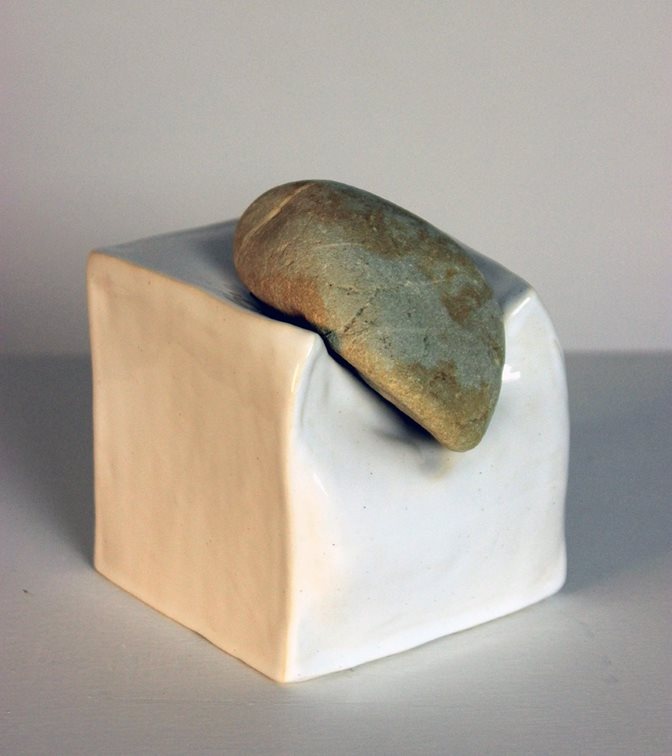This course combines a focused study of artworks, art practice and practical art making.
Students will develop their skills in critical and creative thinking, innovation, problem-solving and risk-taking. analyse, interpret, and respond to artworks and ideas, both in their own work and in the work of others.
Students will be able to test boundaries of traditional art practices in their own art making as they reconceptualise, modify, and explore the appropriation of artworks and images. They also investigate the influences on, and place of new technologies in, art practices and experiences.
It is important to understand that the Art Creative Practice is not restricted to any one medium, material, technique, or studio practice. Students can explore a range of mediums and are not restricted to any one approach.
The Creative Practice is comprised of four components that are based on art practice and Experiential, Inquiry and Project-based learning.
These components are:
- Research and exploration
- Experimentation and development
- Refinement and resolution
- Reflection and evaluation.
Artists, artworks, and audiences
Students study the practices of at least three artists to examine historical and contemporary artworks and practices. The artists are selected from a range of societies and cultures, including artworks by Aboriginal and Torres Strait Islander peoples.
Students explore at least three art forms to produce a range of personal visual responses to a selection of set tasks, showing the exploration of ideas, materials, and techniques. Finished artworks are not an expectation of this.
Students document their use of the Creative Practice, including annotated personal visual responses to a selection of set tasks.
Interpreting artworks and developing the Creative Practice
In this area of study students continue to develop their art practice as they explore collaborative practices to make and present artworks.
Research, analyse and interpret the work of three artists that include an Aboriginal or Torres Strait Islander person an artist who collaborates with other artists, technicians or with the viewer or audience as part of their practice, an artist from a historical period and a contemporary artist.
Students explore and cultural ideas or issues to make and present at least one finished artwork using collaborative approaches.
Students critically reflect on, evaluate and document their use of the Creative practice to develop and make collaborative visual responses.
Investigation, ideas, artworks, and the Creative Practice
Students use Inquiry and Project-based learning as starting points to develop a Body of Work.
Unit 3 commences with students researching the practice of a selected artist as the starting point to develop a finished artwork. The finished artwork will contribute to the Body of Work developed over Units 3 and 4.
Develop personal ideas using research that examines one artwork and the practice of an artist and produce at least one finished artwork using the Creative Practice.
A documented Body of Work that presents explorations and the development of personal ideas within selected art forms, using the Creative Practice and including reflective annotations.
Compare the practices of historical and contemporary artists and use the Interpretive Lenses to analyze and interpret the meanings and messages of selected artworks.
Interpreting, resolving, and presenting artworks and the Creative Practice
Students identify and classify emerging ideas in their artworks and present a critique to the class. The feedback the students receive will focus on how effectively they are communicating ideas in their artworks and how they can continue to refine and resolve their Body of Work.
A documented Body of Work that presents ongoing explorations and development of personal concepts within selected art forms, using the Creative Practice and including reflective annotations.
A Body of Work that resolves personal concepts, ideas and explorations using the Creative Practice, including the presentation of one or more finished artworks that resolve the student’s intentions.
students undertake research of artists, their practices, and their artworks to Compare the practices of historical and contemporary artists and use the Interpretive Lenses to analyze and interpret the meanings of their work.

The image selected here is the work of Shae Jones (2020) whose folio was selected and exhibited at the NGV as part of Top Arts.
What kind of learner is best suited to study this subject?
Innovative, critical and analytical thinker, inquisitive and practical. A visual problem solver.
What key skills are required for success?
Adaptability and risk taking to experiment with materials, techniques and processes. Being organised and curious is important. If you like creating and discussing artwork then you will enjoy this subject.
What are the learning activities in this subject like?
Independent and collaborative tasks, viewing and discussing artworks and visiting exhibitions to learn about exhibition curation and design.
What kind of learner is best suited to study this subject?
Innovative, inquisitive and practical. A visual problem solver and an interest in social and cultural issues.
What key skills are required for success?
Adaptability and risk taking to experiment with materials, techniques and processes. Being organised and self-motivated. If you like creating and discussing artwork and social and cultural issues and ideas expressed in art then you will enjoy this subject.
What are the learning activities in this subject like?
Independent and collaborative tasks, based on inquiry, experimental and project-based learning. Viewing and discussing artworks and exploring the role of art in contemporary and historical cultures and societies.


The images selected here are works by Phoebe Thompson and JoJo Zheng (2021) whose folios were both selected and exhibited at the NGV as part of Top Arts.
Studies in VCE Art: Creative Practice can lead to study and career options in the following areas:
Animator, Art gallery assistant, Art gallery director, Art historian, Art teacher, Art therapist, Artist, Arts administrator, Cartoonist, Ceramic artist, Conservator, Craftsperson, Fashion designer, Filmmaker, Graphic designer, Illustrator, Interior designer, Jewellery designer, Patternmaker, Photographer, Sculptor, Tattooist, Teacher, Visual merchandiser




